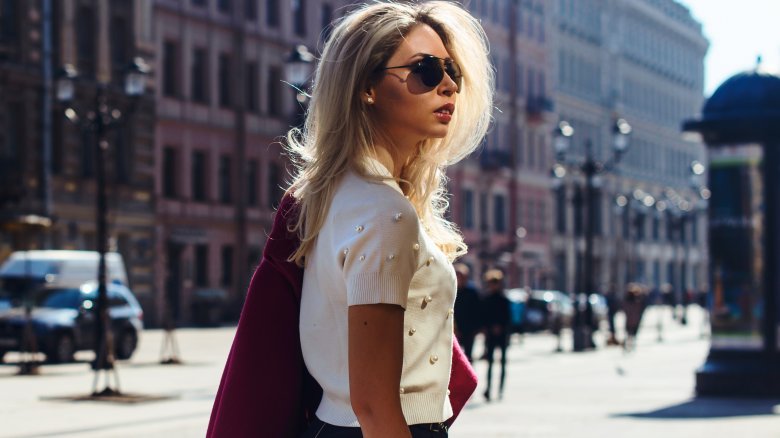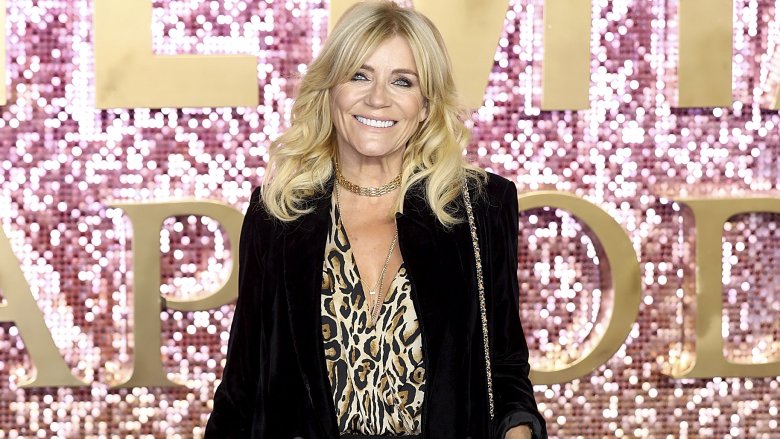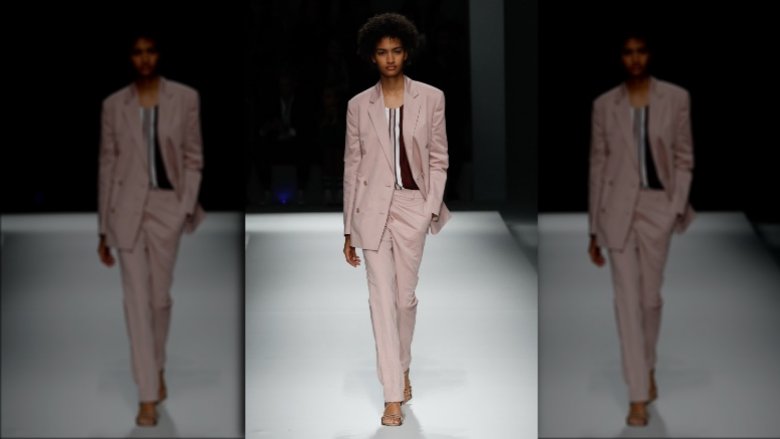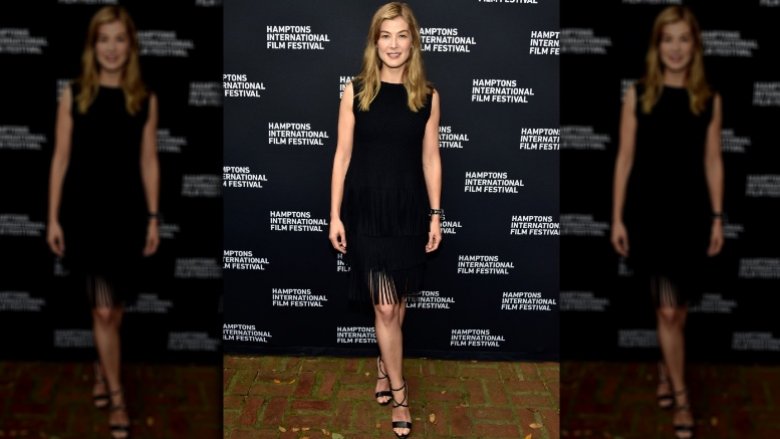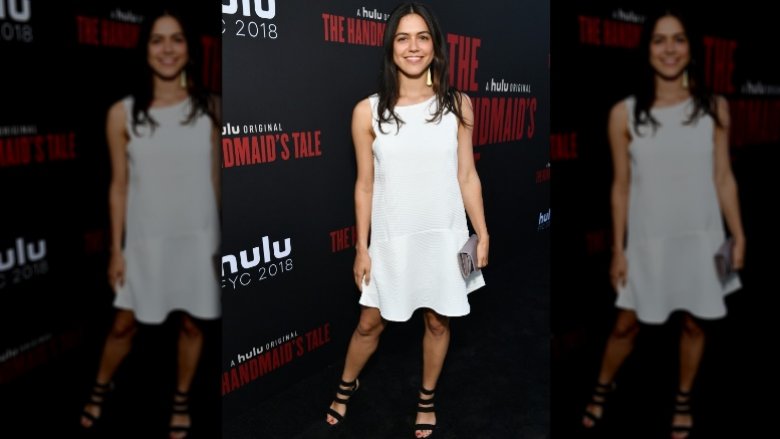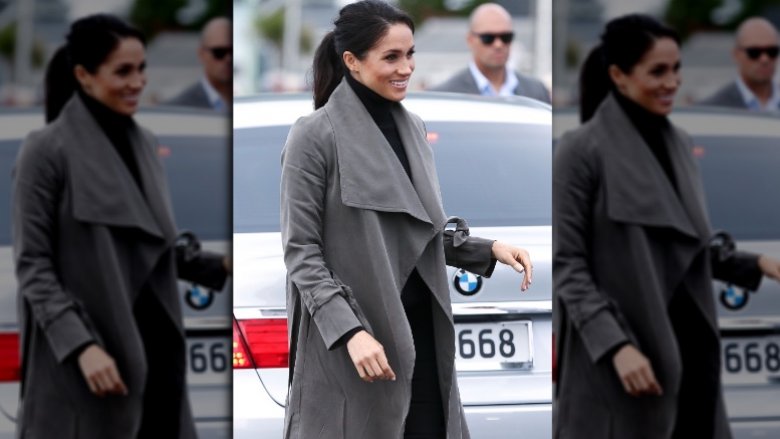Fashion Trends That Will Still Be Around 20 Years From Now
As some trends of the late 1990s and early 2000s are making inroads to reclaim their former en vogue status, there are plenty more looks from 20 years ago that you probably wish you'd never worn. Super baggy jeans, anyone? Or what about butterfly clips? Shudder.
Undoubtedly, the coming years are going to bring more tried and true — and surely even brand new — trends with which we'll all experiment. At the same time, though, there will be a number of styles making their exit from mainstream fashion. From mom jeans to dad sneakers, some of these recently reinvented fads didn't last long — even for fashion, which tends to age in dog years.
Still, that doesn't mean you are going to need to buy a whole new wardrobe. There are plenty of pieces you already own that are virtually timeless. Here are some classic trends that will last you two decades — or more.
Animal prints aren't going extinct
In fall 2018, The List caught up with Elyse Johnson, a wardrobe stylist for the show The List (no relation). She revealed a secret about animal prints — specifically leopard: "It always has a good strong go and then quickly hibernates for a few years." You may want to push the bold print to the back of your closet or box it up for a time, but whatever you do, don't get rid of it.
Brooke Jaffe, the fashion director of women's accessories for Bloomingdale's, told Real Simple that animal prints are still a staple with staying power. "They're seasonless," Jaffe revealed, "And you can wear them with almost anything." Plus, we've already been wearing them a long time. Though in the 18th century, they were reserved for the wealthy and made of real fur — not prints. By the 20th century, however, "mass-produced fabrics and garments" propelled the print into "the mainstream, and began having modern significance," Jo Weldon, author of Fierce: The History of Leopard Print, told CNN.
This versatile t-shirt is here to stay
Stylist and president of Wear it Well, Jennifer Berger, says the most important item in your closet is a simple white t-shirt. In speaking with Reader's Digest, she revealed why, saying, "It never goes out of style and you can dress it up with a blazer, black skinny jeans, and a pair of heels." While there's a good chance you'll wear out your white tee much sooner than it'll go out of style, there are some things you can do to keep your whites brighter for longer.
"The more clothes you have in the load, the more dirt and grime that's released in the washing process," Brian Johnson, director of education at The Drycleaning & Laundry Institute, told Martha Stewart. That dirt will then cling to your garments. Solution: wash your whites in small loads — and only with other whites. You'll also want to make sure you're using the right amount of detergent. Mike Abbott, director of research and development at Hanes, further recommended washing your tees inside-out and using non-chlorine bleach.
Menswear is a timeless trend
In the 1920s, Gabrielle "Coco" Chanel did something revolutionary: she made pants — for women. Yes, pants. Liz Walker, fashion consultant for Marie Claire, told Evening Standard that Chanel was a "visionary" in this way. "If you look back at pictures, it was amazing how early she wore trousers, while people around her were in Edwardian clothes," she revealed. Chanel herself is quoted as saying, "I gave women a sense of freedom; I gave them back their bodies: bodies that were drenched in sweat, due to fashion's finery, lace, corsets, underclothes, padding." We thank you, Coco!
Although pants at that time would've been considered menswear-inspired, they're much the norm — for both sexes — today. Still, menswear is a trend that keeps on keeping' on. In fact, Sharon Graubard, the senior vice-president of creative services at the New York City-based trend-forecasting agency Stylesight, labeled this trend timeless when speaking to Real Simple.
Feminine womenswear isn't going anywhere
Menswear may very well be forever, but femininity still has its perfectly pedicured foot firmly rooted in fashion. Style icons of the 1950s, like Jackie Kennedy and Grace Kelly, helped popularize delicate garments with fitted waists and full skirts. Ever since the style's inception, it's been a look worthy of imitating. But, why? Patricia Mears, the deputy director of the Museum at the Fashion Institute of Technology in New York City, told Real Simple it's simply because the style "complements curves and looks polished but never over-the-top."
"A blouse-and-skirt combo" is a more modern take on the vintage one-piece classic, Brooke Jaffe, the fashion director of women's accessories for Bloomingdale's, told the publication — and it is a look that is truly timeless. Jaffe also suggested a "wrap shirt with an embellished, twirly skirt" if you're looking to up the glam factor of your evening wear.
LBD: your BFFL
Coco Chanel spearheaded the women's menswear movement, but that doesn't mean she shunned dresses. In fact, we not only have Chanel to thank for pants, but also for our iconic little black dresses (or LBDs). According to BBC, Vogue editors in 1926 called Chanel's creation of the simple black dress "the Ford" because it "mirrored the democratic ideals of the Model T car." Although automakers have since departed from making vehicles in the singular dark hue, LBDs still follow Ford's original motto: "You can have any color as long as it's black."
And is it any wonder why this formula is still followed today? Vintage specialist Didier Ludot said the LBD is "an iconic, magical garment as it enhances a woman's features and erases imperfections" — and he's not wrong. Fashion designer Azzedine Alaia furthered explained to BBC, saying, "The little black dress is interesting to designers because it is a wardrobe classic that we can experiment with and twist." There may be no guarantees in life — except for your little black dress.
A perfect pair of gloves
Save for your bulky winter ones, you might not own a decent pair of gloves. However, gloves like that of Audrey Hepburn's in Breakfast at Tiffany's are an accessory that will stand the test of time, according to Beth Dincuff, an assistant professor at the Parsons School of Design in New York City. Not only that, but Dincuff told Independent in 2017: "I think that gloves will be the new 'it' accessory, toppling shoes from their perch in the next decade."
According to the professor, gloves have staying power because they are "functional as well as fashionable." They're also both "genderless and ageless." And yet, they give off a vibe of affluence that Dincuff feels only "ensures that gloves will continue to trend." Gloves do especially well when "ladylike" fashion is in style, says Dincuff. And, since feminine womenswear isn't going anywhere anytime soon, gloves are also here to stay for the foreseeable future.
Minimalism is infinite
Minimalism may be increasing in popularity these days, but the trend — especially as it concerned fashion — began in the 1950s and '60s. Thanks to several couturiers, including American designer Lilly Pulitzer, simple shift dresses took off. Each of the following decades saw their own versions of minimalism and, by the '90s, not only were the cuts of the dresses minimalistic, but also the color palate.
"Clean lines and functionality have always been hallmarks of American style," Patricia Mears, deputy director of the Museum at the Fashion Institute of Technology, told Real Simple. It's easy to understand why minimalist fashion would be everlasting. Utilizing colors like gray, black, and white, while also keeping the cut simple allows you infinite possibilities to mix and match with your other wardrobe staples. But don't think minimalism equates to boring. The combination of black and white packs a powerful punch — and will for years to come.
Don't change your stripes
"I think everyone should own... a striped shirt," celebrity stylist, fashion designer, and author of the book Classic Style revealed to Observer, "It sounds silly, but there are so many colors, sizes and styles!" The stylist went on to admit that she has "a stack of probably fifteen striped shirts." But, wait. Is it horizontal or vertical striped shirts that will persist for decades?
We've all heard the adage that wearing horizontal stripes will make you appear larger than you are, but as it turns out, that's not true — at least not when it comes to three-dimensional objects. You know, like zebras ... and people. Researchers explained to Discover Magazine, saying, "We have examined the claim... and find no support for the notion that horizontal lines would be 'fattening' on clothes." So, whichever kind of stripes suit your fancy, feel free to keep on wearing them until the end of time.
Out of the trenches and into your closet
In 2017, Racked named the trench coat as the coat that "never goes out of style." Although the trench coat is emblematic of World War I, an early version of garment existed as far back as the late 1800s. However, it wasn't until the first world war that, as Jane Tynan, author of British Army Uniform and the First World War: Men in Khaki, told the publication, "This practical garment was adapted for British officers enduring the muddy conditions of the trenches." She continued, saying, "The light fabric gave soldiers mobility, while water-repellent material protected them from wet weather: large pockets kept maps dry, and cleverly placed flaps offered ventilation."
Although they are a fashion statement as opposed to a uniform these days, Mary Ann Ferro, assistant professor of fashion design at the Fashion Institute of Technology, told Racked that the trench coat is still "one of the most utilitarian garments of our day" and one that she says may go through many revisions, but will never go out of style.
Accessories from head to toe
Fashion expert Kate Schelter may rightfully love striped shirts, but they are not the only item in your closet that she thinks will carry you through the decades. She told Observer that she believes every woman should own "a pair of gorgeous black stilettos." Unlike shoes that have come and gone — ahem, platform sneakers — stilettos are here to stay. The stylist and designer also advocates for owning "a great pair of sunglasses."
Sunglasses, like most fashion accessories, change through the years — but there's no reason to follow the trends, according to Schelter. "Sunglasses are like the perfect lipstick shade — you have to do research, invest time and find ones that fit your face, lifestyle and who you see yourself to be, so you can wear them over and over again." If something looks good on you, there's really no way it can go out of style — even some 20 years from now.
